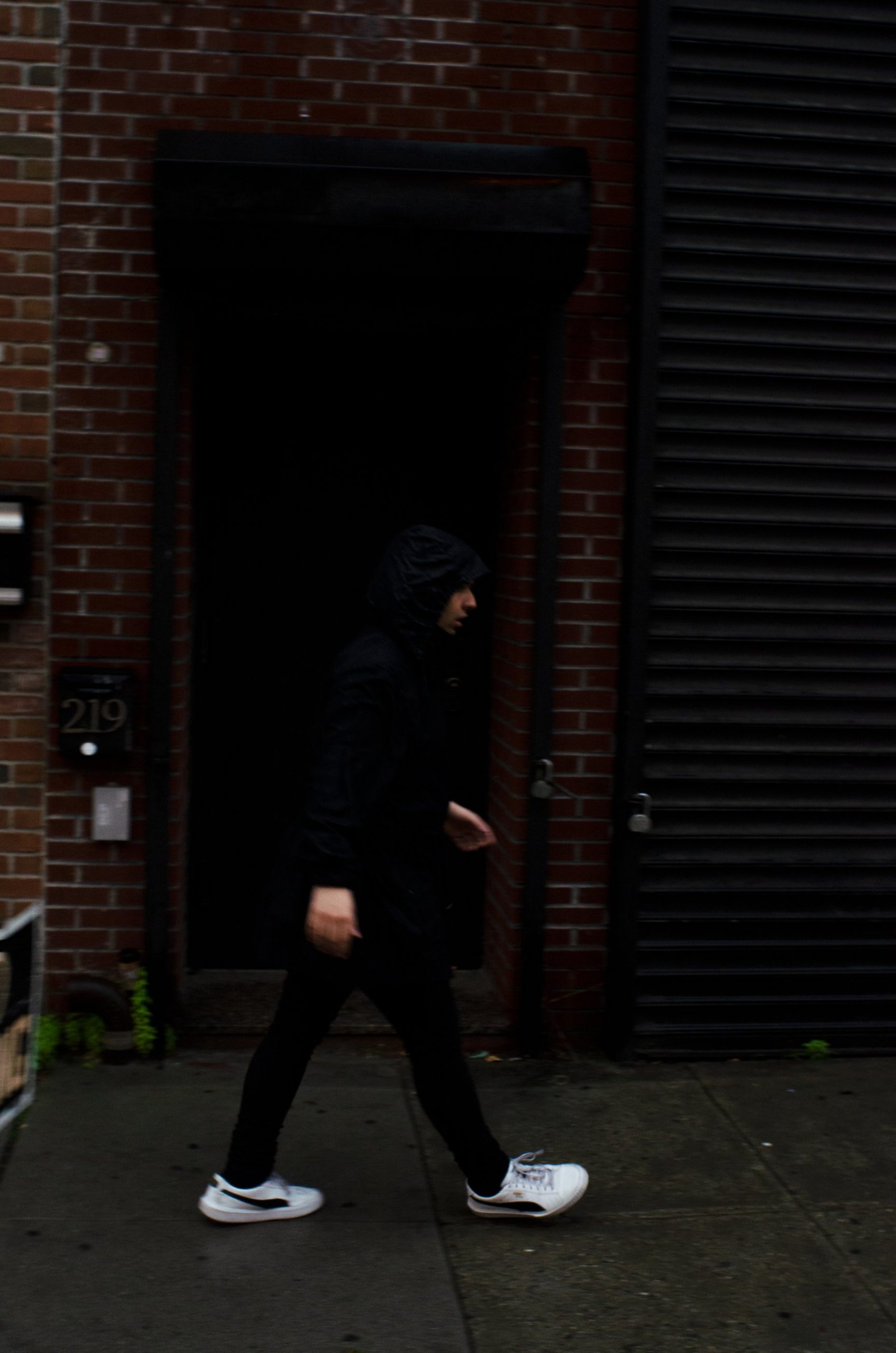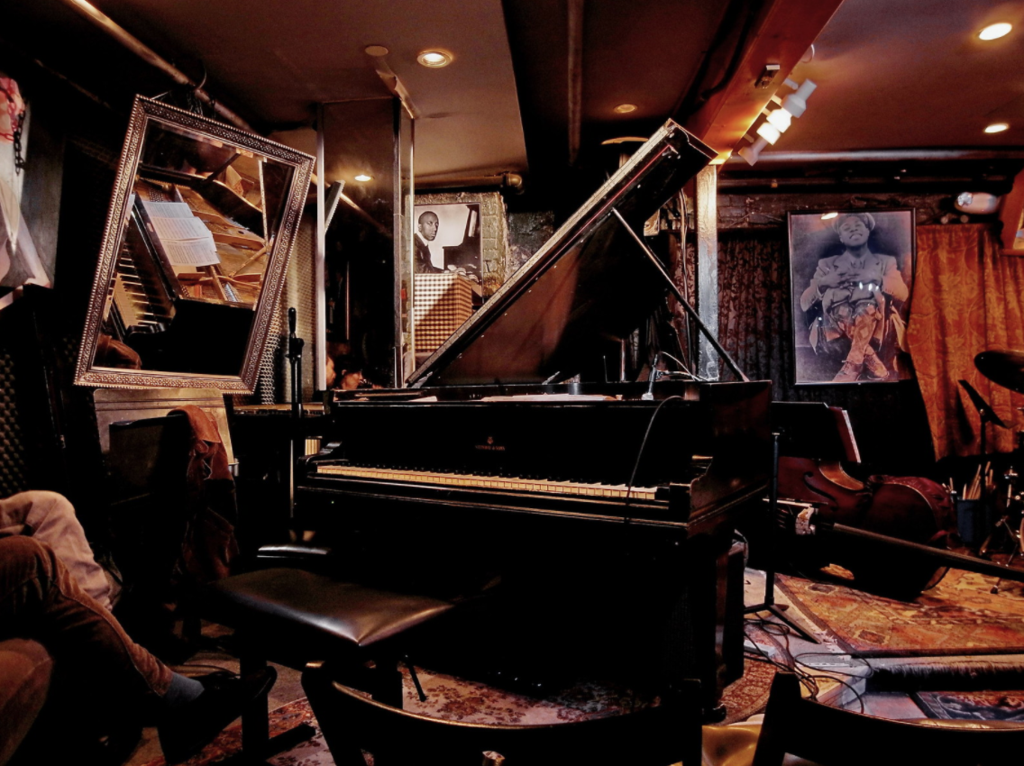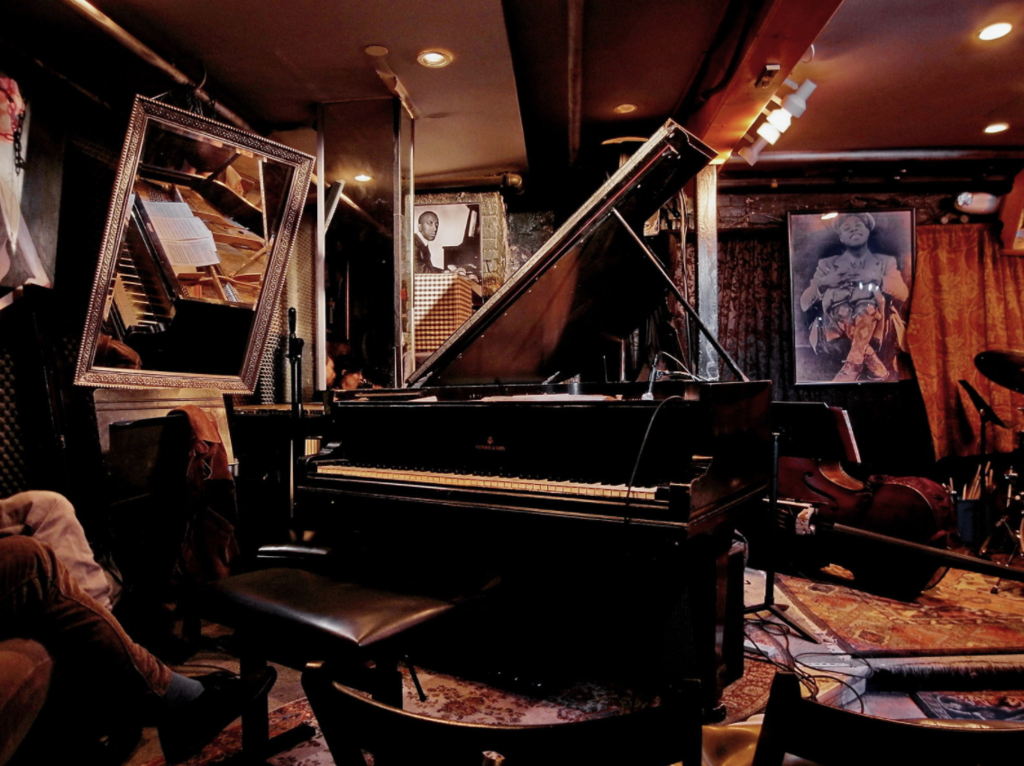
Mauro Ferreiro is a songwriter, musician, electronic producer, and freelance creative from Santo Domingo, Dominican Republic. He is one half of experimental jazz duo Error Subcutáneo and artist for Lebanese label Abu Recordings. He has been a frequent collaborator of idioma, and it was a pleasure to talk about our respective fields and use conversation as a tool for reflection to dig deeper into the relationship between music and fashion.

In your brief time in New York City, we went to the Blue Note together to see Roy Haynes. After that, we checked out the after-hours jazz club called “Smalls”. It was amazing to see that platform for musicians to just play together. People would sign up and play their instrument with strangers, they just jammed. I felt envious of that, in my field, I can’t think of something like that. Where I could just join other designers at 3 AM because I was feeling it, and I could contribute.
I remember that night like it was yesterday! I think Roy Haynes is 94 now… and to see him still playing like that was mind-boggling. I think the ability to dig up restrained impulses is a big thing for performers. The throes of improvisation really start taking shape once you commence that cleansing process. And when you do so amongst strangers, there is this idea of confiding your secrets to them, and everyone is feeling that communication. I think that’s the beautiful thing about jazz, and the thing that makes it a truly global genre, not a niche subculture like a lot of people think.
Vito Acconci once said “Music is time and not space. Music has no place so it doesn’t have to keep its place. It fills the air and doesn’t take up space. Its mode of existence is to be in the middle of things. You can do other things while you’re in the middle of it. You’re not in front of it, you don’t go around it or through it. The music goes through you and stays inside you.”
A big discovery for me was starting to engage with music as my sole point of focus. Like listening to a whole album eyes closed, lights off. I recently did so with Bill Dixon’s Vade Mecum. Listening to LPs and interacting with their continuity can really bridge that gap between space and time, and it can become a multi-sensorial experience if you pay close attention.
I have this need to constantly draw parallels between what I do with other creative fields. Is there something that you see in music that you wish you saw in other fields of art?
I’m a big acoustics geek and have always been amazed by sound and how it physically interacts with its surroundings. Sounds are basically pressure waves that move particles in the air and other objects they come in contact with. I try to use a lot of infrasound in my compositions to quite literally, move the room and the listener. Translating this physicality into other disciplines is something I’d like to see, I think it’s very present in fashion with textiles and the feel they add to an outfit. I think visual artists can also play a bit more with the physics of the visibility spectrum and heat emanation from light sources. Jean Renoir once said there’s no point in replicating nature, but it’s more about augmenting it than anything else.

I remember in a recent conversation you drew a connection between listening to merengue in Jarabacoa to Techno in Berghain. Let’s develop that idea more, what are the similarities between such different musical genres?
You see this in various musical styles, this atemporal quality of being able to perform for countless hours. Especially with many afro-dominican styles such as Gagá or Sarandunga, where performers can switch around and easily play non-stop for hours at a time. I also think there is beauty in restraint and in being able to develop a clear idea within a limited time frame, but when we talk about pure, limbic energy, nothing beats immersing yourself in a trance for a few hours, maybe days.
Genres can become formats of the same thing, repeated again and again. Especially with Pop. What could be done to change that?
I don’t really think you can “try” to change that, there are various factors to take into consideration when answering a question like that. One main consideration is that music is a byproduct of its time. I’ve always found pop music’s marriage to consumer capitalism a very funny one; the artificial demand, the pointless obsession over numbers, it’s as if music was no longer the object, but rather the instrument through which platforms could increase audience engagement times. Remember that your data and how much of it you generate, rather than the songs you listen to, is the true currency nowadays.
Another consideration is the subject of influence. I rarely try to fall into dichotomies such as “music for the people v. music for the self”. We’re social beings who mostly learn and adapt through imitation. However, I think fostering a culture that holds experimentation in high regard is essential if we want to see less of these ‘clichés’.
You once told me that music is a deeply personal affair, and it treats a lot of very emotional stuff inside individuals; it can get messy and it’s not necessarily a luxury product. I agree, but there is emotion in fashion, and looking from the outside, I guess it’s hard to see. It’s important to understand how fashion is created, and it’s actually all about desire and emotion. It’s not the tangible luxury product you refer to. Just like music is not the physical Vinyl.
I totally agree, I think fashion emboldens individuals by giving them shelter in their own body. It can be used to connect with certain cliques, it can signify the mood of an occasion and it can give others cues regarding your emotional state. Remember that up until the start of the century, buying music was very similar to buying outfits. A few LPs could run you a few hundred bucks, but now with all this access, the quality of what we manufacture seems to have drastically diminished, like sweatshop economics.

The track “Manhattan” is one of my favorites on your album Error Subcutáneo, give us a brief of the thought behind it.
I have always romanticized over New York City, ever since I was a kid I was drawn to its melting pot urbanism. When I stayed with you guys in Inwood over the summer, I got to see it again with more of a bird’s eye view, indulging in the heavy political and artistic discourse of the city, two ideas that seem completely unretractable from each other in American society. I remember walking from Times Square to Battery Park during a single day, taking in the city’s extreme parallels: hypercapitalism, multiculturalism. After recording a few AM radio stations with filmmaker Roan Gil, I composed Manhattan, wanting to talk about all that through a sonic medium.
We worked together on a track for Medicina De Amor. I told you I wanted to create a juxtaposition of Musique Concrète & Bachata. This was an interesting experience for me, because I got to sit with you and listen to the process. Are you happy with the result? I know I am.
When you first told me what you had in mind I was like what? But when we sat down and put our ideas on the table, something really special came about. For me it was a big epiphany regarding cross-discipline collaboration: anything is possible with enough deliberation and patience. I was really happy with the result, I also got to sample some CDs I had bought that day at Academy Records right around Flatiron District, so that was pretty cool.
We also worked on a track for the upcoming collection World On A Wire. It was a different experience because you are in London and I am in New York for this one. We did it talking on Skype and sending different versions until we arrived at something that we both agreed worked.
It’s important to demystify long-distance collaboration, most of my creative projects have been long-distance endeavors with great success. It’s different than one-on-one obviously, but strong communication is key in anything. And if you can do that through Skype, you become a great team player across the board.
